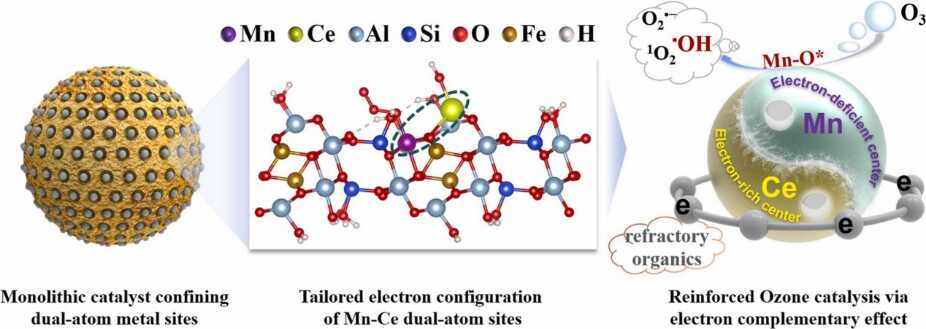

An unprecedented type of 3D porous millimetric ozonation catalyst confining Mn-Ce dual-atom sites in terracotta support (MCT) was hereby reported through a feasible interface oxygen-induced ordering strategy. The utilization of cerium tailored the electron/valence state of dual-atom sites through its oxyphilic 4f orbitals, making MCT present excellent ozone catalysis to remove model recalcitrant fulvic-like acids. The TOC removal kinetics value by MCT is 2.71 and 3.68 times higher than those of catalysts confining single Mn and Ce sites, respectively. The optimized MCT exhibited robust reusability without any regeneration (above 87 % of TOC removal for each cycle), and desirable removal for the biochemical effluent organics of landfill leachate, showcasing a potential of deeply purifying saline wastewater. The electron complementary effect of cerium in dual-atom sites accelerated the electron transfer for O3 catalysis, thus promoting the formation of reactive radicals for pollutant degradation via a thermodynamically feasible surface-adsorbed oxygen pathway. This work highlights the importance of elaborately designing dual-atom metal sites to construct reusable monolithic ozonation catalysts with electron self-cycle function for advanced wastewater purification.
